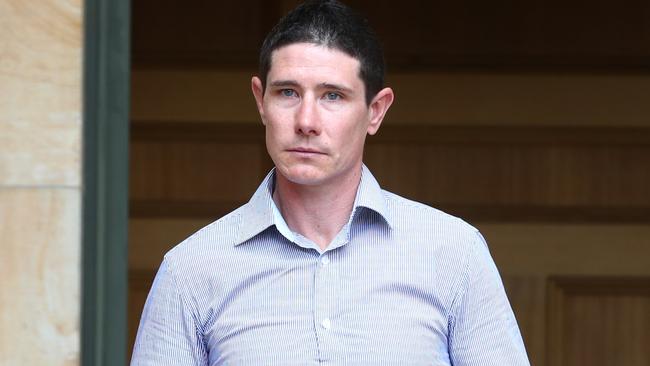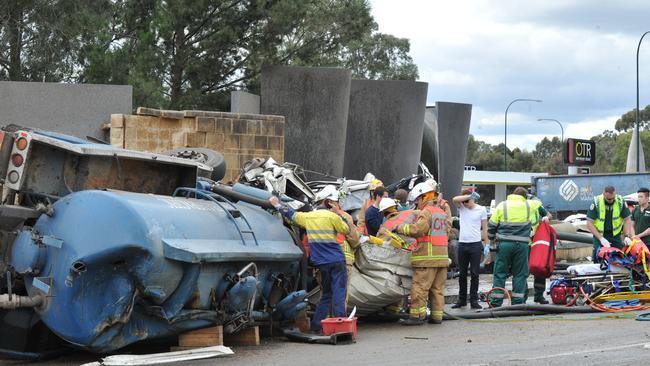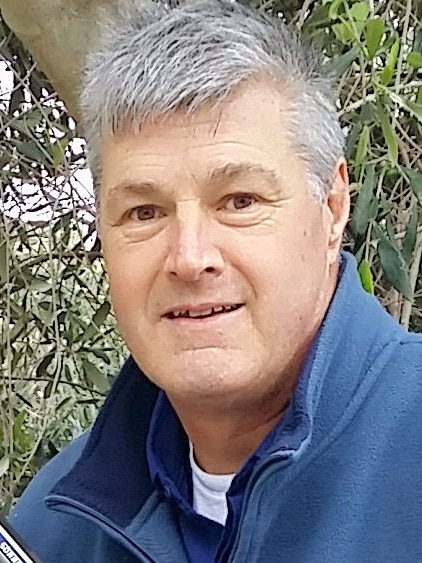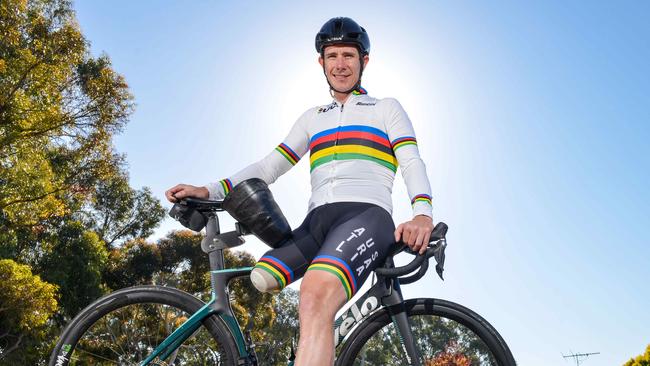2014 South Eastern Freeway crash: Darren Hicks tells how he tried to regain control as his unfamiliar truck accelerated towards disaster
Five years ago he was behind the wheel of an out-of-control truck that caused one of the worst crashes in SA’s history. For the first time, Darren Hicks has given his account of the tragic day.
Law and Order
Don't miss out on the headlines from Law and Order. Followed categories will be added to My News.
Editor’s note: A court suppression order on Darren Hicks’ name dating back to 2018 was lifted on Tuesday morning
- Cleanaway ‘warned brakes were faulty before crash’, court told
- How I survived the freeway truck crash: Louise Compton’s story
The driver of the truck that caused the horror 2014 South Eastern Freeway crash was “standing” on the brakes in a desperate, but failed, attempt to slow it down, a court has heard.
On Monday, former driver and Paralympian Darren Michael Hicks took the stand against his former employer, Cleanaway.
The company has denied federal allegations that it failed to adequately train Mr Hicks before the crash that took his leg, claimed two lives and left a third person permanently affected.
Speaking about the incident for the first time, Mr Hicks – who has been granted immunity from prosecution – told the Adelaide Magistrates Court he had a full load of sewage when he drove on to the freeway.
He agreed he was effectively “standing” on the brakes, with no effect, as the 8000L truck picked up speed.
“You’re not to use the foot brakes unless necessary ... I used the foot brakes because I wanted to slow down,” he said.

“Within seconds an alarm sounded ... that alarm (meant) there was no air in the brakes to use.
“I couldn’t change gears, the truck was going too fast to change down gears – it wouldn’t shift.
“I had already passed both of the arrestor beds before I needed to use the foot brakes.”
On August 18, 2014, the truck slammed into cars at the bottom of the freeway, at 151km/h, while Mr Hicks was behind the wheel.
Jacqui Byrne, 41, and Tom Spiess, 56, were killed, Mr Hicks’ right leg was almost severed and Louise Compton suffered spine, head, brain, lung, torso and psychiatric injuries.
Both Mr Hicks and Cleanaway were charged but, in August 2017, the case against the company was dropped following the tendering of expert evidence.

That evidence asserted Cleanaway did not know the truck’s brakes were faulty because its maintenance company, Adelaide Heavy Diesel, had not made it aware of the problem.
In December 2018, prosecutors dropped their death by dangerous driving case against Mr Hicks, who flagged his intent to give evidence against Cleanaway.
However, in October this year, Adelaide Heavy Diesel filed its defence to a compensation claim by the victims’ families.
It asserted it warned Cleanaway about the truck’s defects 25 days before the fatal crash, recommending it should “not be driven” until the brakes were serviced.


Giving evidence, Mr Hicks said he obtained his heavy rigid vehicle licence a month before the crash through a two-day training course.
While he drove down hills as part of that training, he did not travel on the South Eastern Freeway.
Mr Hicks said he started working for Cleanaway two days before the crash, driving two of the company’s vehicles on those days.
Those trucks, however, had automatic transmissions and he had been accompanied by another Cleanaway employee.
“The truck (that crashed) was, for the most part, completely different from the trucks the previous days and the one I’d trained in,” he said.
“It was older, a manual rather than an automatic, and had two axles instead of three.”
He said at no time was he given any formal training about the trucks, nor asked whether he could drive a manual or if he had experience with the Freeway.

He was also not advised as to how to safely travel down the Freeway and maintain an appropriate speed using the vehicle’s gears and exhaust brakes.
“(On my third day) I was asked if I felt comfortable going out on my own and (the other employee) was asked if I was competent to go out on my own,” he said.
Asked why he had been assigned an unfamiliar truck and route, he replied: “That’s just the way the company worked.”
“You arrived to start your day, you were given a run sheet that had the vehicle you were driving and where you would be driving it,” he said.
“It was just assumed the licence I had let me drive a manual.
“It was the first time I had been in it (the truck that crashed), the first time I had driven it.”
Mr Hicks said he did not notice any mechanical failures as he initially traversed uphill stretches of road.
“The gearbox wasn’t as smooth as I would have liked, it was not easy or smooth to change gears,” he said.
“I don’t recall the exact gear but it was low, first or second ... I was going 10-20 km/h, it was quite slow.
“As I started going downhill, I was going 60-70km/h in fifth gear ... the truck picked up speed as the decline got steeper.”
He said he had been made aware, when getting his licence, that drivers should rely on gears and the exhaust brakes to slow their vehicles down.
“(On that day) I applied the foot brakes, as you would expect ... the exhaust brakes were already on, I had manually turned them on,” he said.
“The speed decreased to 70km/h but the road continued to decline so I still needed to slow the truck down. Once the alarm sounded, the brakes had no effect.”
The trial, before Magistrate Simon Smart, continues.

